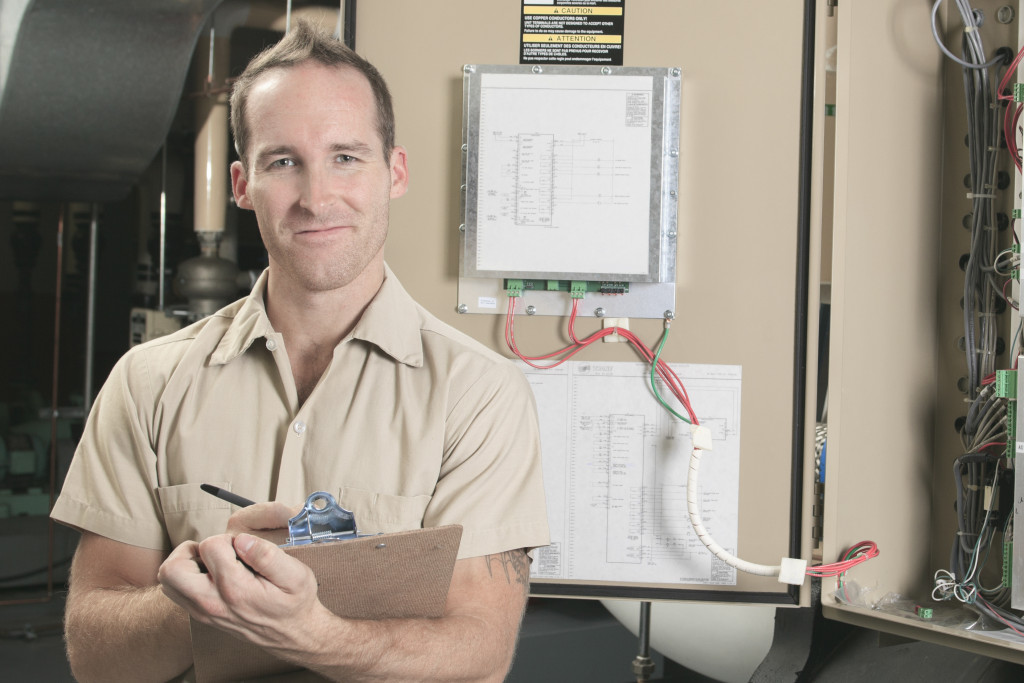- Businesses should create an emergency maintenance plan to reduce downtime and increase productivity when unexpected failures occur.
- Regular maintenance and monitoring should be performed according to the manufacturer’s recommendations to mitigate HVAC system breakdown or failure.
- Surge protection and redundancy planning are two strategies to protect against electrical issues or power outages.
- Reinforcing and retrofitting your building can safeguard it against natural disasters or accidents.
- An emergency response plan should be written down, shared among all employees, and include regular building assessments.
As a business owner or manager, preparing for the unexpected is essential. You can create an emergency maintenance plan to safeguard against any issues that could negatively impact your office’s productivity.
An emergency maintenance plan is crucial for any business to ensure minimal downtime when an unexpected failure occurs. Having a plan will reduce the risk of long periods of inactivity and a decrease in productivity that could hurt your bottom line.
It’s important to identify your business’s critical systems and areas and establish a clear-cut emergency response plan with detailed checklists, contact information, and employee instructions. A comprehensive plan will help mitigate any potential issues so that you can get back to business as usual as quickly as possible.
Mitigating HVAC System Breakdown or Failure
The HVAC system is one of the most critical components of your office’s infrastructure, and when it doesn’t work correctly, it can cause significant issues.
Periodic Upkeep
One way to mitigate potential HVAC failures is by performing regular maintenance and providing monitoring and alarms is essential to help identify and diagnose issues when they arise.
Routine maintenance includes cleaning ductwork, changing filters, and inspecting the unit’s electrical components. This maintenance schedule should be made mandatory and follow the manufacturer’s recommendations.
Monitoring and Alarms
Monitoring and alarms are essential for HVAC systems to help identify potential issues early on. These alarms can signal a likely heat or temperature change and alert the right personnel that work on the air conditioning system inspection is needed.
Some modern HVAC systems have a remote monitoring option accessible via a mobile application or web interface.
Utilizing a Trusted Chiller Hire
Having trusted chiller hire services for your business can assist you with arranging temporary systems during an emergency. Chiller hire services can provide an array of temporary designs like HVAC, Chillers, Boilers, and Generators.
Before signing the contract, you should ensure that the chiller hire service has considerable experience, a prompt response time, and a 24/7 Emergency Service.
Abating Electrical Issues or Power Outages
Electrical issues can cause downtime, laptop and PC damage, and loss of essential data. A comprehensive emergency plan should include the following:
Surge Protection
Surge protection is essential in all office settings; having faulty electronics and equipment due to electrical damage could be very costly. Inserting surge protectors on electrical equipment elevated from the ground is necessary to protect them from power fluctuations.
Identify mission-critical power buses and place them on backup power sources as an added layer of protection.
Redundancy Planning
Redundancy planning involves setting up an extra line of support during a crisis. For instance, keeping backups of essential information on an external hard drive ensures that data loss doesn’t impact your business. The line should be tested and serviced regularly if your building has backup generators.
Regular Inspections
Regular inspections are essential to minimize the risk of electrical issues or power outages. Maintenance your electrical components, change bad electrical outlets or old wirings and ensure your backup power system is up-to-date.
These actions can keep your safety measures up-to-date and reduce the chances of an emergency occurring.

Fighting Structural Damages from Natural Disasters or Accidents
Natural disasters such as hurricanes, floods, earthquakes, or even human-induced accidents such as fire, can cause havoc to any business structure:
Reinforcement and Retrofitting
Reinforcement and retrofitting are two strategies used by structural engineers to increase the strength of your building. Retrofitting involves adding new materials or equipment to older buildings to make them sturdier.
Reinforcement is adding additional materials, such as steel frames or braces, to reinforce the structure against earthquakes, storms, and other natural disasters. These are essential measures to take when securing the longevity of your business.
Emergency Response Plan
An emergency response plan ensures you and your team can act quickly and safely.
Your emergency maintenance plan should include basic steps such as identifying the emergency’s severity, evacuating employees and customers, shutting down electrical and gas lines, and contacting the relevant authorities.
The plan should be in writing, shared among all employees, and prominently displayed throughout the office.
Regular Building Assessments
Finally, it’s crucial to have regular building assessments to ensure that your emergency maintenance plan is up-to-date and your building remains safe for your employees and customers.
Assessments should include routine inspections of electrical and plumbing systems, roofs, walls, and foundations to identify potential problems before they become emergencies.
Minor emergency planning can go a long way in ensuring that your business can function effectively, even in times of crisis. Ensure you have a well-thought-out and thorough emergency maintenance plan covering everything essential to your business.
By identifying critical components, establishing regular maintenance and checks, and enlisting professional help, your office’s efficiency and productivity can stay protected from unexpected breakdowns and potential failures.

